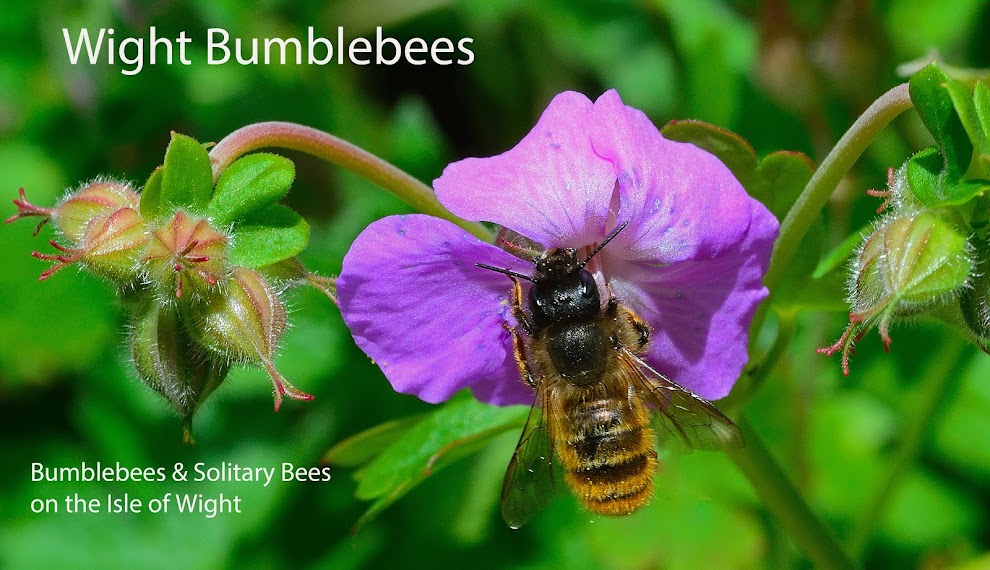The Tree Bumblebee, Bombus hypnorum,is one of the first bumblebees to appear in the spring.Ever since its arrival in the UK in 2001,this bee has spread northwards and a project is currently running to monitor its status in this country. Unusually for a bee this species nests in hollow trees and also in bird boxes.
Today I came across this individual in my local copse busily collecting pollen from the newly emerging sallow flowers.Queens vary considerably in size although the workers are rather small. Colour can be quite variable and some have a very dark thorax.However they will always have a white tail.
 The Tree Bumblebee can be extremely defensive of its nest site and should it be necessary to remove it great care should be taken as they can become very aggressive.Perhaps the best option should be to leave the colony to complete its annual life cycle and die out naturally.
The Tree Bumblebee can be extremely defensive of its nest site and should it be necessary to remove it great care should be taken as they can become very aggressive.Perhaps the best option should be to leave the colony to complete its annual life cycle and die out naturally.
 The Tree Bumblebee can be extremely defensive of its nest site and should it be necessary to remove it great care should be taken as they can become very aggressive.Perhaps the best option should be to leave the colony to complete its annual life cycle and die out naturally.
The Tree Bumblebee can be extremely defensive of its nest site and should it be necessary to remove it great care should be taken as they can become very aggressive.Perhaps the best option should be to leave the colony to complete its annual life cycle and die out naturally. The Bees,Wasps,and Ants Society (BWARS) is monitoring the spread of the species in the UK and any sightings can be reported to the project on their website.The Tree Bumblebee is widespread on the continent and presumably its colonization here was a natural progression,maybe due to global warming.Maybe we can look forward to other continental species arriving in the UK because of our changing climate.
Judging by the latest information this bumblebee has not yet reached Scotland or Ireland but it could only be a matter of time as its habit of nesting in bird boxes will no doubt speed its move north and west.
Like all bumblebees the queen can be seen 'nest searching' in March and April,normally along walls,fencing,guttering and of course around bird box entrances. Bombus hypnorum is generally out and about from early spring until June.
Once the nest is complete it is six weeks until the workers take over the foraging and the nest maintenance duties.A really healthy colony can have as many as 400 bees but usually they are less in number.A colony can live for up to five months although others will end earlier due to the activity of the Wax Moth Aphomia sociella who's caterpillars attack the nest.




No comments:
Post a Comment